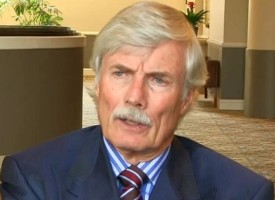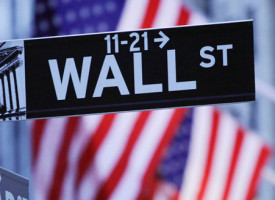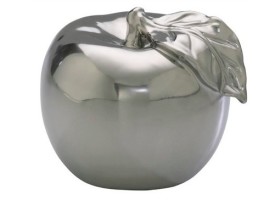Look at who just said the price of gold is headed over $3,000.
Gold: Inflation’s Obituaries are Premature
August 28 (King World News) – John Ing: The deeper problem though is that the Western governments fight against climate change through EVs and renewables has backfired with inflationary implications. Although delays have hit about 40% of Mr. Biden’s taxpayer-funded $400 billion Inflation Reduction Act (IRA) bet to boost the output of EVs, semiconductors and critical minerals, this high spending protectionism has yielded little economic bang for the taxpayers’ buck or done little to reduce the country’s dependence on China or, reduce inflation, or reduce carbon emissions. Despite Biden’s environmental aspirations, the United States has emerged as the global leader in oil production.
It is a whole new world. America’s deficit is greater than most other countries and there appears to be little appetite, particularly in an election year for both parties to tighten the country’s fiscal stance. There are few places to hide. The reality looks gloomier. US debt today stands at $35 trillion with debt to GDP at almost 130 percent and deficits of $2 trillion a year or 8% of GDP. The immediate cause is profligate spending. Bidenomics’ IRA stimulus and separate Chip Act allowed the highly indebted government to vastly expand its powers and spending, which didn’t reduce inflation, but caused it. Mr. Biden’s green revolution broke the bank. At the same time, America’s tax burden remains relatively low with former President Trump pledging even lower rates and an extension of his tax cuts at a cost of $5 trillion.
In 2006, the Fed’s balance sheet was $800 billion or 6% of GDP. Today after record government spending, the Fed’s balance sheet exploded to a whopping $7.3 billion or 26% of GDP. Also, the monetary base is up 60% and year-over-year change in M2 is up 23%. With America’s already strained public finances, the other problem is that fiscal policy remains too loose to control inflation. Debt is not a problem until it is. Given that a dollar bought four years ago is now only worth about 80 cents, all of this is fuel for further inflation. It is a fiscal accident ready to happen…
ALERT:
To learn about one of the greatest gold & silver royalty companies in the world CLICK HERE OR ON THE IMAGE BELOW.

Fiat Money Has Failed Throughout History
There have been many failures in the history of money. Every fiat currency from the Romans to the Turkish Lira where governments spent more than they brought in ended in collapse and hyperinflation. But is America really on the brink of hyperinflation? Not now, but the experience of the 1930s is a useful guide. First, we are concerned that tariffs and the beggar-thy-neighbour policies of today raises parallels to the Weimar Germany hyperinflation when tariffs on agriculture skyrocketed in 1930, helping trigger hyperinflation. Second, America’s finances are in disarray, needing outside help. Third, democracy is under siege. Fourth, America’s debt today surpasses that of Weimar Germany and dollar usage has declined to 58% of the world central bank reserves this year, or a drop of 14% since 2002. In our view, the experiences of the 1930s with a cycle of competitive devaluations and tariff increases are lessons and as the situation worsens, nations are uniting into competing economic blocs to challenge US hegemony.
Political upheaval, massive post-war debt, and deficit spending that culminated in the Great Depression plagued the Weimar Republic. After the First World War, the central bank produced billions of marks to pay its bills, causing uncontrollably high inflation that eventually led to the Weimar hyperinflation. The dollar was worth four marks and twenty pfennigs on August 1, 1914. Just nine years later, in November 1923, the dollar was valued at 4.2 trillion marks. The mark was worth so little by then that labourers received five paychecks a week, and spouses rushed to buy anything before the marks became worthless. Although the current state of inflation in America is far from the hyperinflation that plagued Weimar Germany, there are concerning similarities dating back more than a century, beginning with the conditions reminiscent of the Roaring 20s. And today as before, despite economists’ obituaries on inflation, voters’ main concerns are rising grocery bills, rising restaurant and gas prices which is largely excluded from the index. It is not so different this time.
Gold’s Hedge Against Uncertainties
Gold was always held as a protector of wealth due to its record of long-term price stability. Gold is up 22% so far this year, breaching a 10-year base to new all-time highs at $2,500/oz. Having met our interim target, we continue to believe it will top $3,000/oz. As part of a de-dollarization push, central banks led by China have increased their holdings over the past three years, buying nearly a third of the world’s annual output of gold, increasing their share of reserves at the expense of the dollar, reflecting heightened concern over the US government’s failure to control its profligate spending (notwithstanding the debt ceiling charade) and the subsequent monetary explosion. At the upcoming October BRICS summit there is talk of a BRICS currency basket backed by gold.
Hyperinflation? It can’t happen here. Yet history shows that it can happen to any nation that creates inflation as an acceptable price for growth or debt management. The more America’s debt trap is ignored, the higher the risks of competitive devaluation and currency wars. Simply, the system today is a series of ad hoc arrangements of floating exchange rates with no discipline as reserve creation and inflation show. American economist Milton Friedman once said, “There is only one way to cure inflation, for the Fed and government to spend less and create less money.” Neither candidate is advocating that.
400 Ounce gold Bar Worth Over $1,000,000
As a result, we think that demand for gold is rising again as worries about the state of the world economy and the increasingly unstable geopolitical situation from the Middle East to Asia to the US intensifies. Central bank purchases coincidently picked up after America froze Russia’s foreign exchange reserves. And in fact, central banks were net buyers since the financial crisis of 2008. And, at long last there have been net inflows of 90 tonnes into gold backed ETFs reflecting surging retail demand. The World Gold Council reported that gold demand increased 4% in the second quarter as part of the longest period of gold accumulation since 1950-1965 when they acquired 7,000 tonnes of gold following the Second World War.
Meantime the Shanghai Gold Exchange has developed into the largest physical gold player in the world, aided in part because China has become the world’s largest producer and consumer of gold. By purchasing gold, they understand the fragility of the system, and the US dollar. To them gold is an alternate currency to the dollar and, store of value. For the first time in history, a standard 400 troy ounce gold bar is worth more than $1 million.
To listen to Alasdair Macleod discuss what may cause the silver market to explode higher as well as what’s in store for gold and the mining stocks CLICK HERE OR ON THE IMAGE BELOW.
© 2024 by King World News®. All Rights Reserved. This material may not be published, broadcast, rewritten, or redistributed. However, linking directly to the articles is permitted and encouraged.








